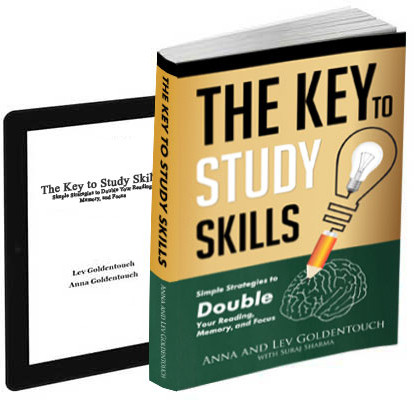Numbers are everywhere. We see them on clocks, price tags, scoreboards, and social media likes. But numbers are more than just tools for measurement. They shape our thoughts, behaviors, and even our emotions. The psychology of numbers goes far beyond math; it’s deeply embedded in how we interpret the world. From sacred geometry to advertising strategies, numbers influence everything. Psychologists and philosophers have long studied how numbers affect our perception and decision-making. While most of us use numbers unconsciously, they often carry symbolic weight. For instance, seven feels “lucky” in many cultures, while 13 is usually associated with bad luck. This article dives into the intricate world of numerical influence, unveiling why we find certain numbers appealing, memorable, or even frightening. Let’s explore how numbers impact our minds, how they are used in memory strategies, and how ancient traditions still echo through our modern numerical logic.
Numerical Codes Through Cultures and Ages
Long before modern psychology existed, civilizations assigned meanings to numbers. Systems like Isopsephy (Greek), Gematria (Hebrew), and Numerology interpret words and concepts through numerical values. These systems suggest that numbers carry hidden truths, connecting language, symbolism, and spirituality. For example, in Gematria, the Hebrew word for “life” has a numerical value of 18, making it a sacred number in Jewish culture.
Numerology remains widely popular, where numbers from birth dates and names are said to influence personality and destiny. Whether you consider it science or mysticism, such systems demonstrate how deeply numbers are woven into our collective consciousness. They exemplify how ancient traditions anticipated the modern “number psychology” explored by cognitive scientists today. Cultures worldwide still practice rituals based on lucky numbers, avoid taboo ones, and structure events or businesses accordingly. Numbers are cultural carriers of meaning.
How Numbers Shape Human Order
Carl Jung famously described numbers as pre-existent archetypes. He believed numbers form the structure of consciousness itself. When people encounter numbers repeatedly—like seeing 11:11 on a clock—they often assign deep personal meaning to the pattern. This shows how our brains impose order and symbolism even on abstract concepts.
This ordering function is essential in life. Calendars, financial systems, architecture, and social hierarchies rely on numbers to organize chaos. As Pythagoras once said, “All is number.” The ancient Greek philosopher saw numbers as the universe’s building blocks, a belief that echoes in sacred geometry and even modern physics. Our need to make sense of the world compels us to rely on numbers as the invisible grid that holds everything together, from the laws of motion to the formula of love in literature.
When Numbers Speak in Our Sleep
Dreams often feature numbers—a house with four doors, a countdown timer, or a number on a license plate. According to Jungian analysts, numbers in dreams are not arbitrary. They represent archetypal energies or stages in psychological development. For example, dreaming of “three” may symbolize the integration of opposites or a pending resolution.
Marie-Louise von Franz, a close collaborator of Jung, emphasized how numbers in dreams can be keys to understanding one’s unconscious processes. The meaning is personal and collective, rooted in centuries of symbolic interpretation. So, when numbers visit your dreams, pay attention. Your subconscious might be speaking in digits. Keeping a dream journal and noticing recurring numbers could help decode emotions or unresolved experiences hiding deep within.
Wholeness Within: Numbers and the Self
The number 4 holds particular significance in psychological theory. Jung associated it with the concept of wholeness. Consider the four elements, the four cardinal directions, or the four stages of life. These quaternities often mirror the structure of the self.
This symbolic completeness appears in many cultures. In Chinese philosophy, harmony arises from balancing the five elements, yet the four directions are essential for navigation. Such frameworks reflect an internal craving for completeness and balance. This alignment of number and psyche forms a core idea in the psychology of numbers. The yearning for unity is often subtly echoed in rituals, architecture, and cultural systems grounded in quadrants, circles, and crosses.
Do Numbers Have a Life of Their Own?
What if numbers are not just tools but entities with their psychological energy? Jung proposed that numbers possess autonomous qualities. They can appear in synchronicities or dreams without conscious intent. Numbers like 7 or 13 influence behavior simply through cultural weight.
Marketers have long used this insight. Pricing something at $9.99 instead of $10 exploits how we process numbers emotionally rather than rationally. We see a “lower” number and associate it with a better deal, even though the difference is negligible. Numbers behave almost like independent agents in our decision-making process. They don’t just describe value; they create it. In this way, numbers impact everything from product pricing to how we rate our emotions or memories on a scale.
Unifying Reality: Numbers and the ‘Unus Mundus’
Jung and physicist Wolfgang Pauli explored the idea of the Unus Mundus or “one world” – a unified reality where psyche and matter are inseparable. Numbers, they believed, serve as the connecting thread.
This psychoid perspective treats numbers as bridges between the tangible and intangible. For example, the Fibonacci sequence appears in natural structures (like sunflower spirals) and aesthetic proportions. It suggests that reality has an inherent numerical structure. Through numbers, we might glimpse the fabric of the cosmos. Our logical brain and intuitive soul both respond to numbers not only because of their usefulness, but because of their symmetry, balance, and rhythm.
Synchronicity and the Numerical Web
Have you ever repeatedly seen the same number in a short span? A birthdate, receipt total, or license plate number? Jung called this phenomenon “synchronicity.” It describes meaningful coincidences with no causal explanation, but they are linked through number and experience.
In these moments, numbers act as signals, nudging our attention toward something deeper. They spark introspection, intuition, or a sense of interconnectedness. You can explore this intuitive use of numbers in memory strategies more at the Key Numbers Method blog. Even in artificial intelligence and random number generation, patterns are sometimes interpreted as signs, blending data science with mysticism.
Bridging Mind and Reality with Numbers
Numbers serve as a bridge between internal perception and external reality. They help us measure, compare, and analyze. But they also guide our emotions, intuitions, and cultural behaviors. This duality makes them powerful tools for both science and symbolism.
In cognitive science, numbers are also tied to memory and learning. Techniques like the number peg or the major system rely on associating numbers with images or stories. This is beautifully explained in this blog on remembering long numbers. The mind often prefers meaning over quantity, so linking numbers to images enables us to anchor information effectively.
What the Number 1 Means to Us
The number 1 represents unity, origin, and selfhood. It symbolizes the beginning and is often associated with leadership, independence, and individuality. In many philosophies, 1 is the divine source from which all else emerges.
Psychologically, encountering the number 1 can evoke feelings of focus and solitude. It might appear during phases of self-discovery or personal transformation. In design and branding, the number 1 signifies excellence or being the best, reflecting our internal drive for uniqueness. We want to be number one because it fits primal instincts around competition, survival, and self-esteem.
The Dual Dance of the Number 2
Two introduces duality: day and night, good and evil, self and other. It marks the start of comparison and relationship. Symbolically, it often stands for balance or conflict. We see this in yin and yang, where opposites create harmony.
In the psyche, 2 represents interpersonal dynamics. It prompts reflection on relationships, choices, and moral dilemmas. This polarity is essential for growth. Understanding the dual nature of things helps us move toward integration and higher awareness. Whether in romantic partnerships or internal conflicts, the number 2 always suggests a dance between balance and tension.
The Meaning Behind the Magic of 3
Three is a powerful number found in storytelling, religion, and psychology. Think of the Holy Trinity, the three-act narrative structure, or Freud’s id, ego, and superego. Three provide a framework for transformation: thesis, antithesis, and synthesis.
In psychology, three often reflects mental harmony and resolution. It can signal the completion of a journey or the convergence of different ideas. Seeing the number 3 repeatedly might indicate a time for synthesis in your life. Great speeches, tales, and punchlines often work in threes, reinforcing how our brains are wired to find completeness in triads.
Why the Number 4 Feels So Solid
Four symbolizes structure, stability, and balance. Think of the four seasons, four legs of a table, or the four directions. In sacred geometry, the square represents grounding and order.
Jung considered the four a symbol of the self’s integration. This is where the psyche achieves wholeness. The number 4 brings reassurance and calm, implying safety and foundation. It’s no coincidence that homes and rituals are often built around quadrants. Across ancient temples and modern cities, symmetry in fours signifies intention and timelessness.
Uncovering the Hidden Power of Numbers 5–10
Each of the numbers from 5 to 10 carries a specific esoteric meaning:
- 5: Human experience – five senses, five fingers. Symbol of life and human scale.
- 6: Harmony and beauty. In sacred geometry, it forms the hexagon, a naturally efficient shape.
- 7: Mysticism and intuition. Seen as a bridge between the material and spiritual realms.
- 8: Infinity and abundance. In Asian cultures, it represents prosperity.
- 9: Completion and transcendence. Often marks the end of a cycle.
- 10: Perfection and return to unity. It encompasses the numbers before it and restarts the cycle.
You can deepen your understanding of how these numbers appear visually and symbolically in learning with this visual guide to numbers.
Why Do Humans Like Bigger Numbers?
Marketing thrives on large numbers. More followers, more likes, more savings. But “why do humans like bigger numbers psychology” has much to do with status and perceived value. Bigger numbers often signal more success, safety, and wealth.
This bias can be misleading. A bigger number doesn’t always mean better. But our brains are wired to associate size with significance. This is why countdowns, rankings, and points systems are so persuasive. They exploit our subconscious attraction to quantity. In a society where metrics define validation, large numbers have become the currency of credibility.
The Influence of Zero
Among all digits, zero stands out as the most enigmatic. The “Power of zero” lies in its paradox—representing nothing yet changing everything. Place a zero next to a one, and it becomes ten. Add a few more and you get a million.
Zero revolutionized mathematics and computing. Psychologically, it symbolizes potential, mystery, and void. In Zen philosophy, emptiness is a form of completeness. Zero, in this sense, is full of possibility. From binary code to black holes, the concept of zero drives modern technology and metaphysics.
Why We Fall for Large Numbers
We often don’t realize how numbers trick us. For example, a study might say 80% success rate instead of 20% failure. The “why do humans like bigger numbers” effect means focusing on what sounds more promising.
This optimism bias helps explain why numbers dominate advertising and decision-making. The illusion of magnitude seduces us. However, becoming aware of this bias is the first step toward better judgment. Once we understand how these figures manipulate us, we regain control over our choices and break free from illusion.
Conclusion
From mystical symbolism to modern cognitive strategies, the psychology of numbers surrounds us. It influences our thoughts, decisions, and dreams. Numbers are more than abstract figures—archetypes, messengers, and bridges between realms.
Whether through Jungian theory, numerology, or memory enhancement, numbers speak a language our minds inherently understand. As you navigate your world, pay attention to the digits that repeat themselves. They might be telling you something profound.
The psychology of numbers isn’t just theory. It’s a framework for understanding reality itself.

Get 4 Free Sample Chapters of the Key To Study Book
Get access to advanced training, and a selection of free apps to train your reading speed and visual memory

